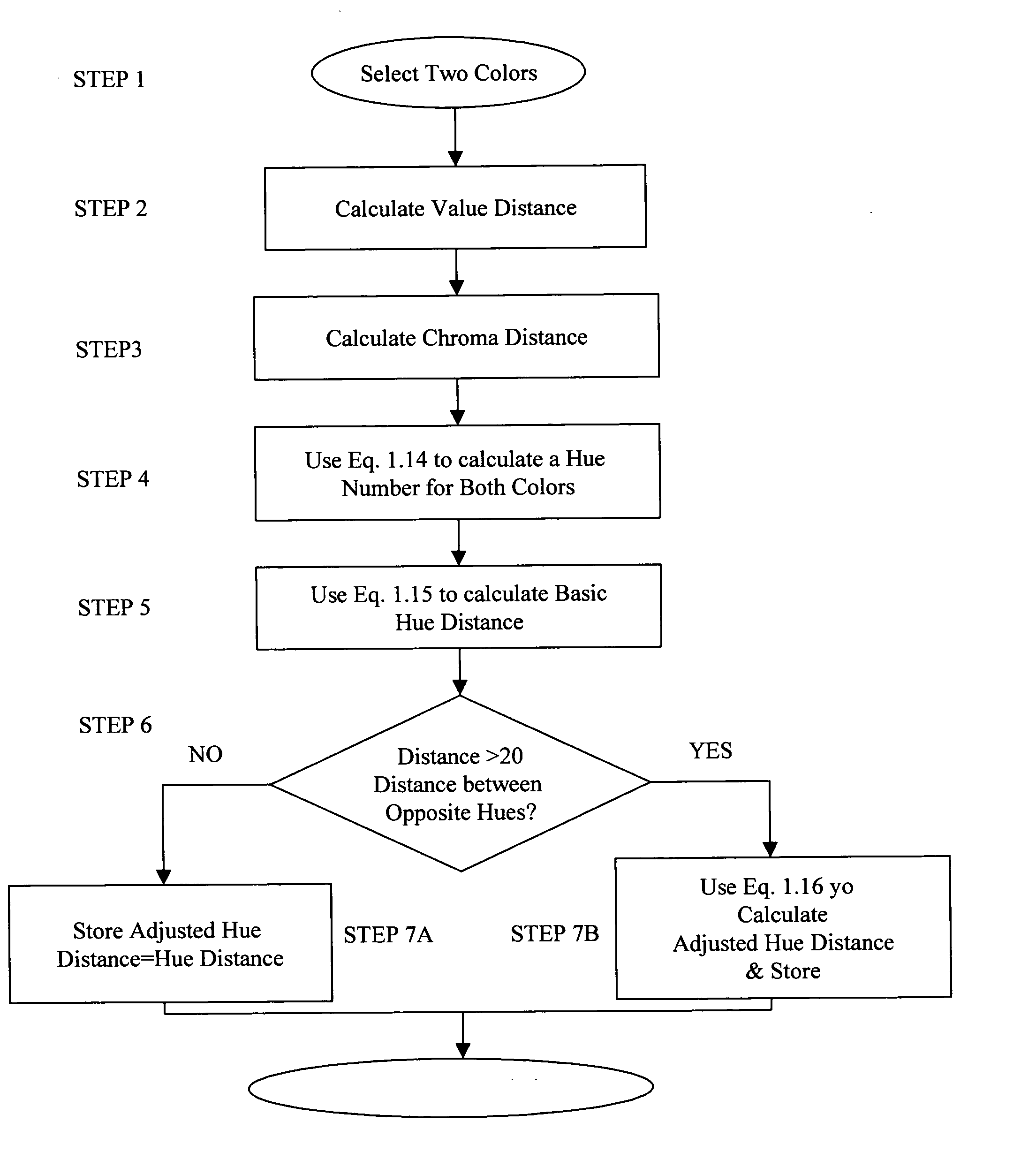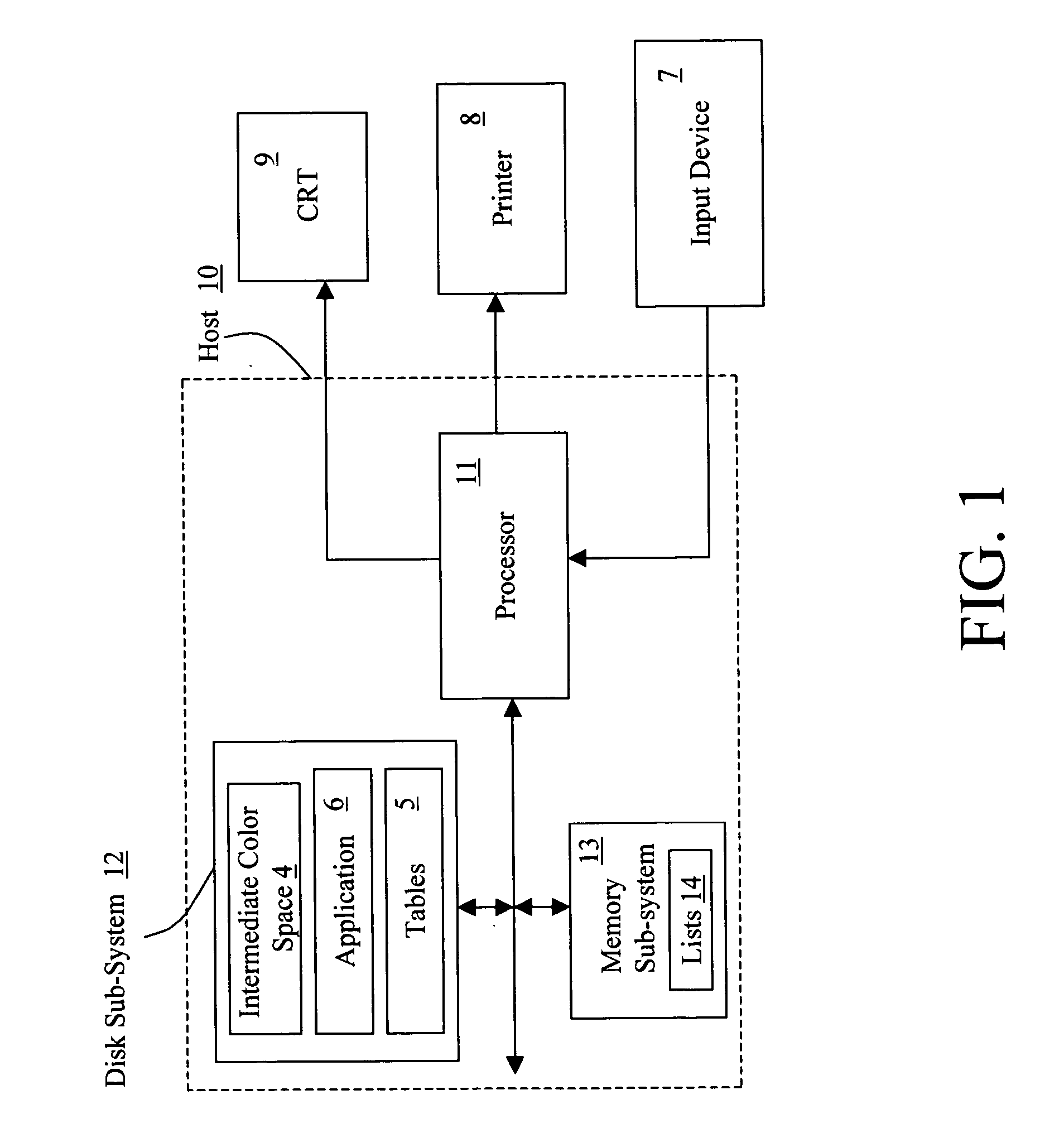Color correction method with improved image translation accuracy
- Summary
- Abstract
- Description
- Claims
- Application Information
AI Technical Summary
Benefits of technology
Problems solved by technology
Method used
Image
Examples
Embodiment Construction
[0022] Referring to FIG. 1, the host computer (10) can be any commercially available computer system with the capacity to run the application (6) and has a central processor (11) in communication with a disk sub-system (12), a memory sub-system (13), and a variety of peripheral devices (7), (8), & (9) for example. The disk sub-system functions as permanent storage for various software systems needed in order for the host to operate. For instance, this software could be an operating system (not shown), device drivers (not shown), color correction application software (6) to accurately translate color images from a source medium to a target medium, and look-up tables (5) to convert color image value information from the format of a source medium, for example, to another format. At the time of host initiation or boot, portions or all of certain software systems are loaded into the memory sub-system and are accessed by the processor (11) to operate on information provided by a user or t...
PUM
 Login to View More
Login to View More Abstract
Description
Claims
Application Information
 Login to View More
Login to View More - R&D
- Intellectual Property
- Life Sciences
- Materials
- Tech Scout
- Unparalleled Data Quality
- Higher Quality Content
- 60% Fewer Hallucinations
Browse by: Latest US Patents, China's latest patents, Technical Efficacy Thesaurus, Application Domain, Technology Topic, Popular Technical Reports.
© 2025 PatSnap. All rights reserved.Legal|Privacy policy|Modern Slavery Act Transparency Statement|Sitemap|About US| Contact US: help@patsnap.com



